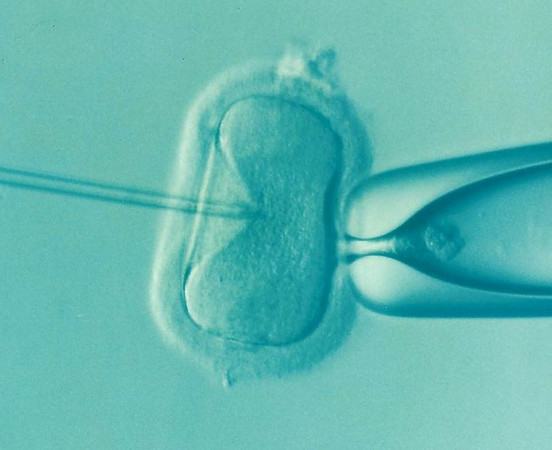
By definition, artificial insemination delivers sperm into the woman’s womb. In Vitro Fertilization (IVF) goes beyond this point by bringing the woman’s egg and the man’s sperm together outside the woman’s body. The term “test tube babies” is synonymous with IVF.
Since 1978, and Louise Brown’s birth (the first person born via IVF) in Great Britain, this technique has greatly surpassed its initial purpose, specifically as a means to deal with tubal infertility. Today, more than half of all IVF procedures are performed for other reasons, for example, it is used in response to unexplained infertility and to increase the success rate in cases of male infertility.
For most people, IVF is simply about two gametes being joined in a test tube. But for couples who have decided to undergo IVF treatment, it means countless clinic appointments, blood tests, injections, a lot of probing and prodding and a great deal of waiting. Waiting for test results, waiting for embryos, waiting for the pregnancy test, waiting for the arrival of a child in their life.
The many challenges that couples undergoing IVF treatment will have to meet include learning all about the process; a considerable amount of information that is not always easy to understand. We suggest that before you decide to undergo IVF treatment, you find out as much as you can on the subject by speaking with your physician and by researching the topic via the numerous books and websites dedicated to it. Learning as much as you can will help put your mind at ease as you embark upon your IVF treatment.
Preliminary Stages of IVF
You and your partner will meet with one of our physicians. At that point, you will receive your diagnosis, and work closely with your physician to determine if IVF is the best treatment option for your specific situation.
Once you have decided to pursue IVF, you will undergo the general work-up, along with further meetings, appointments and tests:
- A consultation with a counselor or psychologist who specializes in fertility.
- Another appointment with your physician to formulate your IVF plan.
- A meeting with your nurse where she will review all the information relative to each stage of the treatment with you. She will also give you your medications and explain how to use them and the treatment calendar.
- A consultation with the urologist if you need epididymal sperm aspiration or testicular sperm extraction. A blood sample may also be required for genetic testing. Patients have the choice of having these tests performed at their Procrea Fertility practice or elsewhere.
All of these preliminary stages allow you to better prepare yourselves for IVF by correcting any identified causes and providing you with all the information you need to understand the process. The stages of the IVF process itself are explained below.
First Stage: Ovarian Suppression
The first stage of the process consists of suppressing ovarian function by administering an oral contraceptive and/or a medication that inhibits pituitary gland function. This stage is not always required and your doctor will determine if you need it or not. During the suppression phase, the levels of estrogen become very low, similar to menopause, which leads to some of the side effects, such as hot flashes and mood changes. This stage (if determined to be the best choice for you) then allows us to replace your natural cycle by an artificial cycle, which is then controlled with the medications prescribed.
Second Stage: Ovarian Stimulation (superovulation)/Controlled Ovarian Hyperstimulation (COH)
Ovarian suppression is reached when the estradiol level is sufficiently low, as described in Stage 1. At this time, ovarian stimulation can begin in order to achieve an “artificial cycle”. Your ovaries usually produce and release a single egg per cycle. Although this is sufficient for natural conception, conception with IVF usually requires more.
This is achieved by ovarian hyperstimulation. These medications stimulate the development of several ovarian follicles resulting in the retrieval of more eggs.
- Estradiol levels – this blood test is used as an indicator of your response to the medications.
- LH – luteinizing hormone – these levels need to be suppressed in order to block you from releasing the eggs too early.
- Transvaginal ultrasound – used to see the number and the diameter of the follicles that have developed during ovarian stimulation.
Third Stage: Triggering the Egg Maturation Process
When follicles are large enough and when hormonal levels are adequate, it is time to trigger the ovaries to prepare the eggs for maturation and ovulation. The trigger is done by injecting hCG (human chorionic gonadotropin, a pregnancy hormone similar to LH) or a recombinant hormone.
Fourth Stage: Egg/Oocyte Retrieval (also referred to as Ovum Pickup – OPU)
Eggs are retrieved transvaginally under ultrasound guidance. Having located the mature follicles, the physician will insert a needle, attached to the probe, into each follicle and aspirate the fluid from each of them. You are given a local anesthetic and a sedative through an i.v. (intravenous) infusion. If you are interested, you may watch the procedure on the ultrasound monitor. The embryologist analyzes the contents of every follicle under the microscope. Once the procedure is completed, you are told how many eggs were retrieved. On that same day, these eggs will be combined with the sperm, In Vitro, should fertilize and then form the embryo.
Fifth Stage: Embryo Transfer
Embryo transfer entails placing one or more embryos (usually one) inside the patient’s uterine cavity usually on cycle day 5. It requires a full bladder for better visualization with the abdominal ultrasound probe.
What’s Next?
Having to wait for your pregnancy test is often the most stressful time for patients undergoing IVF treatment. A blood test will be performed 12 days following your transfer; this test accurately detects the pregnancy hormone (hCG) in your blood. You will be called the same day with the long-awaited result, which will hopefully be positive.
